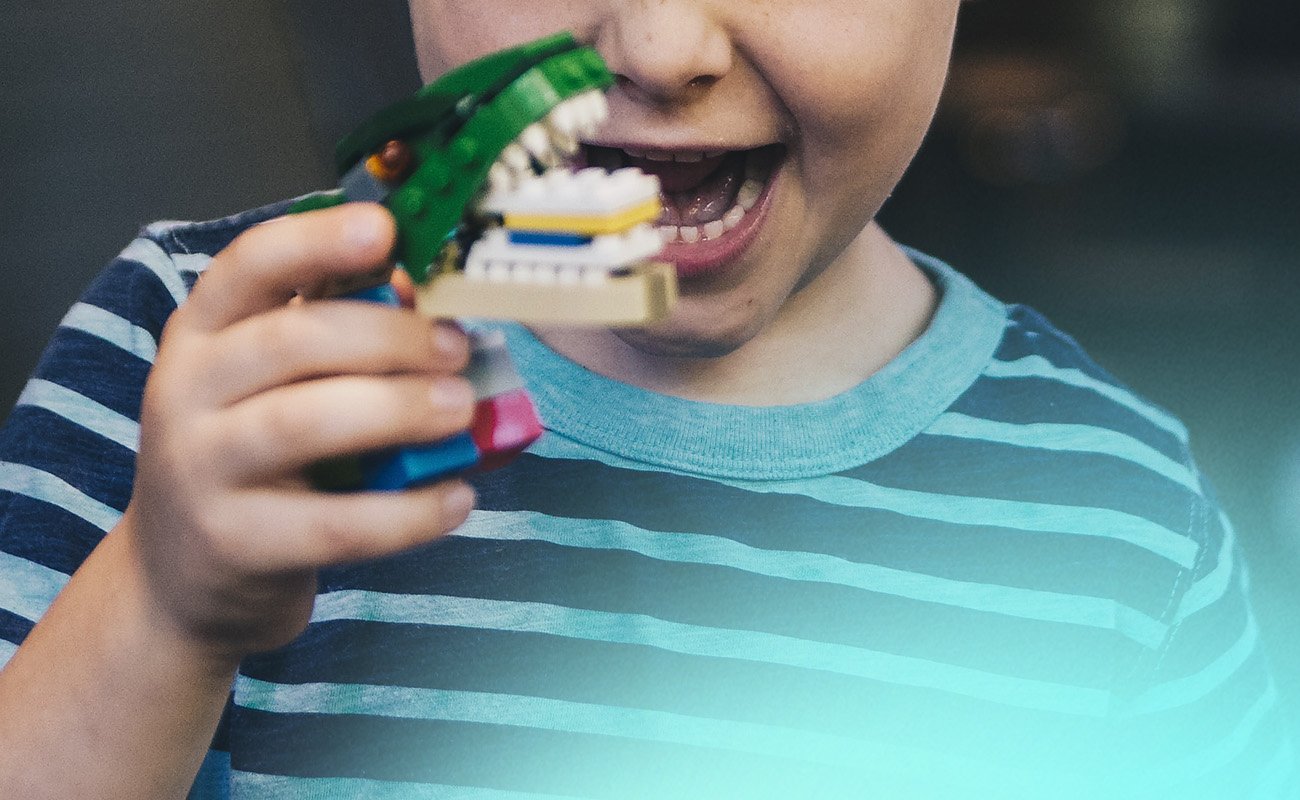Considering the right time to start your child’s orthodontic treatment? Wondering if traditional metal braces are still the best option, or are there more modern, less noticeable solutions? With a wide range of orthodontic solutions available, selecting the best braces for kids that meet your child’s specific needs requires careful consideration.
This guide aims to walk you through the maze of options available, from classic metal brackets to sleek, nearly invisible aligners and more. We’ll also delve into the optimal time to begin treatment. Armed with this information, you will be well prepared to make a decision that is in line with your child’s health and well-being.
What Age Is the Best for Braces? When is the Earliest You Can Get Braces?
Determining the best age for braces often depends on various factors, including the child’s dental development and the specific orthodontic issues they face.
Generally, orthodontists recommend an initial evaluation around the age of 7, when most children have a mix of baby and permanent teeth. This early assessment allows the orthodontist to identify potential issues and plan for future treatment, which might not start immediately.
The most common age for starting braces tends to be between 9 and 14, coinciding with the growth spurt of puberty, making it an optimal time to correct dental misalignments as the body is naturally growing and changing. However, the earliest age for braces can vary; in cases of severe malocclusion or other dental issues, intervention might begin earlier to take advantage of the child’s growth patterns for more effective treatment.
Worth Knowing
The American Association of Orthodontists recommends that a child’s first check-up with an orthodontist should be undertaken when an issue with their teeth is first recognized, which should be no later than the age of seven. Research shows that a child who is aged seven would more than likely have enough permanent teeth that would allow an orthodontist to do a proper evaluation of the development of the jaws and teeth.
See our article: Different Kinds of Braces.
Are Metal Braces Best Braces for Kids?
Metal braces have long been the go-to choice for orthodontic treatment in children, thanks to their proven effectiveness in correcting a broad spectrum of dental issues. Whether it’s simple misalignments or more intricate bite problems, metal braces are known for their capability to tackle a wide range of orthodontic challenges.
One of the key advantages of metal braces is their durability and strength, making them an ideal option for children, who may not always be mindful of caring for more fragile orthodontic devices. This resilience is particularly beneficial given the active nature of many children’s daily activities.
In recent years, advancements in orthodontic technology have led to the development of smaller, more comfortable metal braces. Additionally, the option to customize these braces with colored bands has become a popular feature, allowing kids to personalize their braces and make the experience more enjoyable.
Despite the emergence of various alternatives to metal braces, such as ceramic braces and clear aligners, metal braces often remain the preferred option due to their reliability, effectiveness, and cost-efficiency. However, the decision on the best type of braces for a child should take into account the individual’s specific dental needs, personal preferences, and lifestyle, along with the orthodontist’s professional advice.
Worth Knowing
A study featured in the European Journal of Paediatric Dentistry finds that around the world, 56% of people experience malocclusion, with this condition affecting both genders equally.
Alternatives to Metal Braces for Kids
Clear Braces
Clear braces bring a subtle touch to the world of orthodontics, using transparent materials that align teeth without overshadowing your child’s natural smile. They’re designed for comfort, minimizing the usual hassles of eating and speaking that can come with braces, and their discreet look is a big plus for kids who are a bit self-conscious about their appearance. This can be a real confidence booster as they go through their treatment journey.
But keep in mind, that clear braces often come with a higher price tag than the traditional metal ones, and they’ll need some extra care to keep them looking invisible. They’re also a tad more vulnerable when it comes to rough play or sports.
Partial Braces
Partial braces are an effective orthodontic tool for children who require a lighter approach to straightening their teeth or correcting mild bite issues. While metal or ceramic brackets and wires are still used, they only cover some of the teeth, usually the top set at the front, and can be removed much more easily than traditional braces.
The pros of this treatment include lower cost, improved comfort, greater discretion, less tooth staining, and easier maintenance. However, partial braces do not offer corrections as effectively as full bracket systems, may need to be replaced more often, and are unlikely to work for those with more complicated orthodontic needs.
Self-Ligating Braces
Self-ligating braces are a great option for children. Contrary to traditional braces, self-ligating braces have a mechanism that allows the wire to move freely resulting in less friction and subsequent discomfort for the patient.
While more expensive than traditional braces, self-ligating braces require fewer adjustment visits with the orthodontist. Since they are less intrusive, there is no need for additional bands or springs, resulting in a clean appearance.
The primary downside of these types of braces is that they can be slightly uncomfortable due to differences in size and shape from traditional brackets.
Lingual Braces
Lingual braces are a popular orthodontic treatment option among children as they are virtually undetectable, meaning that the child’s peers won’t even know they are wearing them.
Each brace is tailored to fit the patient’s unique tooth structure and mouth configuration for optimal results. Though the benefits of lingual braces include discrete treatment and irritation-free adjustments, one downside can be the cost as they are usually more expensive than traditional braces. Another downside can be difficulty in keeping the brackets and wires clean due to their placement behind the teeth.
See our Incognito Braces Vs Invisalign Comparison.
Mini Braces
Mini braces provide a great solution for young kids who may not be ready for traditional braces but need corrective dental treatment to get their teeth healthy and properly aligned.
These tiny metal brackets are bonded directly to the teeth, offering a more discrete option than larger metal brackets that require bands around the teeth. Kids can enjoy improved confidence during their time wearing mini braces, as these smaller devices provide a more natural look.
While mini braces offer some great benefits for children, such as fewer food traps and easier cleaning compared to conventional braces, they usually cost more and the results may not be as long-lasting in younger patients still growing permanent teeth. Additionally, mini braces can place stress on baby teeth roots, creating instability that can affect adult teeth and position.
Clear Aligners
Clear aligners are a fantastic choice for kids, especially teens, who are conscious about their appearance while undergoing teeth straightening treatment. The beauty of clear aligners lies in their virtually invisible design and the comfort they offer, making them an ideal pick for day-to-day wear. They stand out as a discreet and efficient way to achieve a straighter, healthier smile without the hassle of frequent dental appointments, wires, or brackets that can often cause discomfort.
It’s important to note, however, that clear aligners are generally recommended for kids aged 12 and above who have most of their permanent teeth, as this is when they can be most effective. While they offer a less visible solution to teeth straightening, clear aligners may not be suitable for correcting more complex dental misalignments. Additionally, the responsibility required to wear the aligners for the recommended 22 hours a day may pose a challenge, particularly for younger children who might not adhere to the treatment protocol without constant supervision. Despite these considerations, for older children and teenagers looking for a subtle orthodontic solution, clear aligners remain a popular and attractive option.
See our article: Invisible Braces for Kids.
Here are some reviews of the best at-home aligners available:
AlignerCo is a well-known brand that provides an affordable aligner program. Their prices are lower than most other aligner brands, with treatment starting at just $945, which also includes free retainers and a teeth whitening kit.

AlignerCo
The cheapest at-home aligners, with monthly plans, no down payment, and considerable discounts.
Check out AlignerCo AlignersNewSmile is one of the newest aligner brands on the market and is known for its affordability. When you purchase their aligners, you receive an impression kit, whitening foam, aligners, and retainers. This brand also provides monthly payment plans without requiring any initial payments, offers a video call option with a specialist to assist with mouth impressions, and has a user-friendly online assessment process.

NewSmile
Affordable at-home treatment with positive reviews offering superior look and comfort.
Check out NewSmile AlignersByte is a well-known brand that offers a lifetime guarantee for your aligners. This means that if your teeth don’t stay in the desired treatment position afterward, you’ll receive additional impression kits, treatment plans, and sets of aligners at no additional cost to correct any misalignments.

Byte
An affordable option with refundable impression kits, free HyperByte, and a Byte for Life guarantee.
Check out Byte AlignersCandid is a highly regarded aligner product with a treatment approach similar to Invisalign. Unlike the other brands mentioned, Candid doesn’t offer a direct-to-home ordering service. Instead, a qualified orthodontist will assess your eligibility for treatment. The advantage is that you won’t need regular appointments after starting treatment. Candid aligners are suitable for addressing both mild and severe spacing issues.

Candid
A hybrid of in-office and at-home treatment that provides 1-on-1 orthodontist support.
Check out Candid AlignersBest Braces for Kids – Choose Wisely
In the quest for the perfect smile for your child, it’s clear that there’s no one-size-fits-all solution. Whether it’s the sturdy reliability of traditional metal braces, the discreet charm of clear braces, or the near-invisibility of clear aligners, each option has its unique benefits and considerations. The key is to weigh these factors carefully, keeping in mind your child’s specific needs, their level of responsibility, and, of course, their personal comfort and confidence.
Consultation with a trusted orthodontist will help guide this important decision, ensuring that you choose wisely for your child’s path to a healthier, happier smile. After all, the best braces for your kid are the ones that not only correct dental issues effectively but also fit seamlessly into their active lives.
Frequently Asked Questions:
Which Braces Are the Best for Kids?
Traditional metal braces have been around for decades and provide a great solution for correcting serious misalignment of teeth. However, modern orthodontic options are much less noticeable and offer added comfort.
Clear braces, lingual braces, or aligners might be a better choice for children seeking discreet tooth correction.
Are Clear Aligners or Regular Braces Better for Kids?
Clear aligners provide an inconspicuous treatment process compared to traditional braces, but regular braces may be better for more severe dental work that requires adjustment of several teeth.
Ultimately it should be discussed with a professional orthodontist who can tailor the choice based on individual needs.
Can Kids Wear Clear Braces?
Clear braces are becoming increasingly popular for children due to their near-invisibility and affordability. The traditional metal braces serve the same purpose, but many parents find them aesthetically unappealing and want something that kids can wear without embarrassment.
There is little difference in terms of effectiveness between clear braces and traditional ones, so they are a good choice for younger patients who need orthodontic correction. Most orthodontists recommend clear braces as they are more comfortable than metal ones, making them well-suited to young patients.
At What Age Do Most Children Start Wearing Braces?
The average age that which children begin the process of wearing braces is between 10 and 14.
At these ages, the child’s permanent teeth have typically grown in, making it a great time to identify any potential issues with their bite that braces can help fix. Early intervention is typically recommended as it can often lead to better long-term outcomes with less treatment needed than if they wait until they are older.
Sources
Saliba Moimaz, S. A., Ísper Garbin, A. J., Chaves Lima, A. M., Lolli, L. F., Saliba, O., Adas, C., A longitudinal study of habits leading to malocclusion development in childhood, BMC Oral Health 2014. Available online at: https://bmcoralhealth.biomedcentral.com/articles/10.1186/1472-6831-14-96
Papageorgiou, S. N., Gölz, L., Jäger, A., Eliades, T., Bourauel, C., Lingual vs. labial fixed orthodontic appliances: systematic review and meta-analysis of treatment effects. Eur J Oral Sci. 2016;124(2):105-18. DOI: 10.1111/eos.12250. Available online at: https://pubmed.ncbi.nlm.nih.gov/26916846/
G Lombardo, F Vena, P Negri, S Pagano, C Barilotti, L Paglia, S Colombo, M Orso, S Cianetti, Worldwide prevalence of malocclusion in the different stages of dentition: A systematic review and meta-analysis; Eur J Paediatr Dent. 2020 Jun;21(2):115-122. doi: 10.23804/ejpd.2020.21.02.05. Available online at: https://pubmed.ncbi.nlm.nih.gov/32567942/

